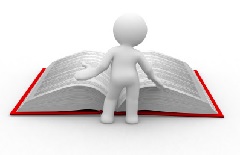 ALKYD – A highly adhesive paint that has the same pigment as oil paints, yet contains a binder with a quicker drying time. Alkyds are soluble when wet in turpentine but resistant to solvents when dry. With alkyds, there is no “bleed out” ring as sometimes occurs with oils.
ALKYD – A highly adhesive paint that has the same pigment as oil paints, yet contains a binder with a quicker drying time. Alkyds are soluble when wet in turpentine but resistant to solvents when dry. With alkyds, there is no “bleed out” ring as sometimes occurs with oils.
BASE-IN – To apply a thin, even coat of dry paint over an entire section.
BASECOAT – The color applied to an object before shading or highlighting. A surface usually requires two to three “basecoats,” with sandings between each coat.
BLEND – To combine the different values with thin layers of paint.
C-STROKE – Sideload brush, angle away slightly, and form an arc in the shape of a “C”.
CENTER-LOAD – Blot wet brush on paper towel. Dip one corner of brush into paint and blend on palette.
DIRTY BRUSH – Whatever color is in the brush at the time in addition to the next color mentioned in the instructions. Blending the old and new color on the palette creates a new value.
DISTRESS – To mark up or mar a finish in order to give the appearance of being antique.
DOUBLE-LOADING – Load brush first on one side in the main or base color. Flip the brush over and dip other side in another color. Stroke lightly on palette in the same direction to blend colors.
DRY BRUSH – To use very little paint and no water.
FINISHING – The last procedure after the project has been completed. This includes antiquing, varnishing, and hand-rubbing.
FLOAT COLOR – Color is blended in the brush before it is applied to the painting surface. Dip brush in water or medium, blot, sideload in color, and blend on palette. The color should be evenly blended through the brush with no visible line, from strong color on one side of the brush to gradual fading on the other.
FLYSPECK – To spray tiny specks of paint on painting surface. Thin paint with water or medium to ink-like consistency. With stiff bristle brush, pick up paint and run a finger along the bristles, flicking paint onto the surface. Test technique on palette before applying.
GLAZE – A thin wash of color applied over a dry base which has been premoistened with water or a medium, creating a luminus effect. Use separate brushes for applying the medium and paint. Soften harsh edges.
HIGHLIGHT – Adding lighter tones to an area to strengthen it or to create contrast.
LAYERING – To gradually build up floated color. Let each application of paint dry then reapply paint to effect a layered look.
PALETTE – A board on which to place and mix paint colors or can refer to the paint colors indicated for a project.
REGISTER MARKS – Marks to indicate alignment, position, or placement (of stencils).
RETARDER – Product intended to slow the drying time of acrylics. Can be mixed into paint, used as a moistening agent for blending color, or used to moisten the brush before adding color.
SEALER – A protective coating applied to a porous surface before painting. Wood surfaces should be sanded then sealed with a good wood sealer. Apply a metal sealer to tin. For painted backgrounds, apply an acrylic sealer and, if too thick, thin with water.
SHADE – To deepen or darken an area.
SIDELOAD – Dip one corner of flat brush into paint puddle and stroke brush in same direction, blending on palette until there is an even gradation of color.
STIPPLE – To “pounce” up and down with small amount of paint on brush to create a textured effect.
TINT – An accent of color used in a mid-value area or to show reflected light.
TRANSFER PAPER – Paper used to transfer a pattern or design from one surface to another. Use either chalk tracing or graphite paper (a black carbon paper used to transfer a design to a light-colored surface).
TRANSPARENT TECHNIQUE – Used when the background is to show through, or a delicate look is desired. Brush retarder over the area, blot brush and apply paint sparingly, allowing the background or underlying color to show through. Or blend together retarder (or water) and paint into brush and then apply.
VARNISH – Used to produce a protective, smooth and glossy surface. Available in either spray or brush on. Apply several coats with light sandings between each coat. Check continually for runs.
WASH – Paint thinned to a transparent consistency which allows background color to show through. Applied with smooth, flowing strokes.
WET-ON-WET BLENDING – To blend the highlight or shadow color over a wet base. May be done while the base color is still wet or can be remoistened with color if dried.